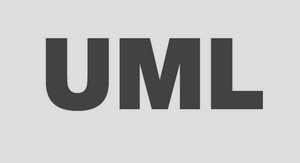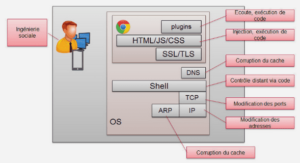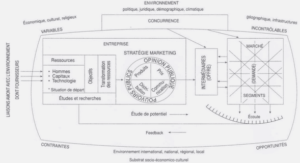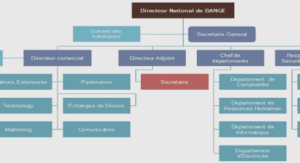Sommaire: Cours OMG unified modeling language specification
Preface
0.1 About the Unified Modeling Language (UML)
0.2 About the Object Management Group (OMG)
0.3 About This Document
0.4 Compliance to the UML
0.5 Acknowledgements
0.6 References
1. UML Summary
1.1 Overview
1.2 Primary Artifacts of the UML
1.3 Motivation to Define the UML
1.4 Goals of the UML
1.5 Scope of the UML
1.6 UML – Past, Present, and Future
2. UML Semantics
Part 1 – Background
2.1 Introduction
2.2 Language Architecture
2.3 Language Formalism
Part 2 – Foundation
2.4 Foundation Package
2.5 Core
2.6 Extension Mechanisms
2.7 Data Types
Part 3 – Behavioral Elements
2.8 Behavioral Elements Package
2.9 Common Behavior
2.10 Collaborations
2.11 Use Cases
2.12 State Machines
2.13 Activity Graphs
Part 4 – General Mechanisms
2.14 Model Management
Index
3. UML Notation Guide
Part 1 – Background
3.1 Introduction
Part 2 – Diagram Elements
3.2 Graphs and Their Contents
3.3 Drawing Paths
3.4 Invisible Hyperlinks and the Role of Tools
3.5 Background Information
3.6 String
3.7 Name
3.8 Label
3.9 Keywords
3.10 Expression
3.11 Note
3.12 Type-Instance Correspondence
Part 3 – Model Management
3.13 Package
3.14 Subsystem
3.15 Model
Part 4 – General Extension Mechanisms
3.16 Constraint and Comment
3.17 Element Properties
3.18 Stereotypes
Part 5 – Static Structure Diagrams
3.19 Class Diagram

3.20 Object Diagram
3.21 Classifier
3.22 Class
3.23 Name Compartment
3.24 List Compartment
3.25 Attribute
3.26 Operation
3.27 Type vs. Implementation Class
3.28 Interfaces
3.29 Parameterized Class (Template)
3.30 Bound Element
3.31 Utility
3.32 Metaclass
3.33 Enumeration
3.34 Stereotype
3.35 Powertype
3.36 Class Pathnames
3.37 Accessing or Importing a Package
3.38 Object
3.39 Composite Object
3.40 Association
3.41 Binary Association
3.42 Association End
3.43 Multiplicity
3.44 Qualifier
3.45 Association Class
3.46 N-ary Association
3.47 Composition
3.48 Link
3.49 Generalization
3.50 Dependency
3.51 Derived Element
3.52 InstanceOf
Part 6 – Use Case Diagrams
3.53 Use Case Diagram
3.54 Use Case
3.55 Actor
3.56 Use Case Relationships
3.57 Actor Relationships
Part 7 – Sequence Diagrams
3.58 Kinds of Interaction Diagrams
3.59 Sequence Diagram
3.60 Object Lifeline
3.61 Activation
3.62 Message and Stimulus
3.63 Transition Times
Part 8 – Collaboration Diagrams
3.64 Collaboration
3.65 Collaboration Diagram
3.66 Pattern Structure
3.67 Collaboration Contents
3.68 Interactions
3.69 Collaboration Roles
3.70 Multiobject
3.71 Active object
3.72 Message and Stimulus
3.73 Creation/Destruction Markers
Part 9 – Statechart Diagrams
3.74 Statechart Diagram
3.75 State
3.76 Composite States
3.77 Events
3.78 Simple Transitions
3.79 Transitions to and from Concurrent States
3.80 Transitions to and from Composite States
3.81 Factored Transition Paths
3.82 Submachine States
3.83 Synch States
Part 10 – Activity Diagrams
3.84 Activity Diagram
3.85 Action state
3.86 Subactivity state
3.87 Decisions
3.88 Swimlanes
3.89 Action-Object Flow Relationships
3.90 Control Icons
3.91 Synch States
3.92 Dynamic Invocation
3.93 Conditional Forks
Part 11 – Implementation Diagrams
3.94 Component Diagram
3.95 Deployment Diagram
3.96 Node
3.97 Component
Index
4. UML Standard Profiles
Part 1 – UML Profile for Software Development Processes
4.1 Overview
4.2 Introduction
4.3 Summary of Profile
4.4 Stereotypes and Notation
4.5 Well-Formedness Rules
Part 2 – UML Profile for Business Modeling
4.6 Introduction
4.7 Summary of Profile
4.8 Stereotypes and Notation
4.9 Well-Formedness Rules
5. UML CORBAfacility Interface Definition
5.1 Overview
5.2 Mapping of UML Semantics to Facility Interfaces
5.3 Facility Implementation Requirements
5.4 IDL Modules
6. UML XMI DTD Specification
6.1 Overview
6.2 Physical Metamodel
6.3 UML XMI DTD
7. Object Constraint Language Specification
7.1 Overview
7.2 Introduction
7.3 Connection with the UML Metamodel
7.4 Basic Values and Types
7.5 Objects and Properties
7.6 Collection Operations
7.7 The Standard OCL Package
7.8 Predefined OCL Types
7.9 Grammar
A. UML Standard Elements
B. OMG Modeling Glossary
Extrait du cours OMG unified modeling language specification
Preface
0.1 About the Unified Modeling Language (UML)
The Unified Modeling Language (UML) provides system architects working on object analysis and design with one consistent language for specifying, visualizing, constructing, and documenting the artifacts of software systems, as well as for business modeling.
This specification represents the convergence of best practices in the object-technology industry. UML is the proper successor to the object modeling languages of three previously leading object-oriented methods (Booch, OMT, and OOSE). The UML is the union of these modeling languages and more, since it includes additional expressiveness to handle modeling problems that these methods did not fully address.
0.2 About the Object Management Group (OMG)
The Object Management Group, Inc. (OMG) is an international organization supported by over 800 members, including information system vendors, software developers and users. Founded in 1989, the OMG promotes the theory and practice of object-oriented technology in softwaredevelopment. The organization’s charter includes the establishment of industry guidelines and object management specifications to provide a common framework for a pplication development. Primary goals are the reusability, portability, and interoperability of object-based software in distributed, heterogeneous environments. Conformance to these specifications will make it possible to develop a heterogeneous applications environment across all major hardware platforms and operating systems.
OMG’s objectives are to foster the growth of object technology and influence its direction by establishing the Object Management Architecture (OMA). The OMA provides the conceptual infrastructure upon which all OMG specifications are based.
0.3 About This Document
This document is intended primarily as a precise and self-consistent definition of the UML’s semantics and notation. The primary audience of this document consists of the Object Management Group, standards organizations, book authors, trainers, and tool builders. The authors assume familiarity with object-oriented analysis and design methods. The document is not written as an introductory text on building object models for complex systems, although it could be used in conjunction with other materials or instruction. The document will become more approachable to a broader audience as additional books, training courses, and tools that apply to UML become available.
UML Summary
1.1 Overview
The Unified Modeling Language (UML) is a language for specifying, visualizing, constructing, and documenting the artifacts of software systems, as well as for business modeling and other non-software systems. The UML represents a collection of the best engineering practices that have proven successful in the modeling of large and complex systems.
1.2 Primary Artifacts of the UML
What are the primary artifacts of the UML? This can be answered from two different perspectives: the UML definition itself and how it is used to produce project artifacts.
1.2.1 UML-defining Artifacts
To aid the understanding of the artifacts that constitute the Unified Modeling Language itself, this document consists of chapters describing UML Semantics, UML Notation Guide, and UML Standard Profiles.
1.2.2 Development Project Artifacts
The choice of what models and diagrams one creates has a profound influence upon how a problem is attacked and how a corresponding solution is shaped. Abstraction, the focus on relevant details while ignoring others, is a key to learning and communicating. Because of this:
• Every complex system is best approached through a small set of nearly independent views of a model. No single view is sufficient.
• Every model may be expressed at different levels of fidelity.
• The best models are connected to reality.
In terms of the views of a model, the UML defines the following graphical diagrams:
• use case diagram
• class diagram
• behavior diagrams:
…….
Si le lien ne fonctionne pas correctement, veuillez nous contacter (mentionner le lien dans votre message)
Cours OMG unified modeling language specification (6241 KO) (Cours PDF)




